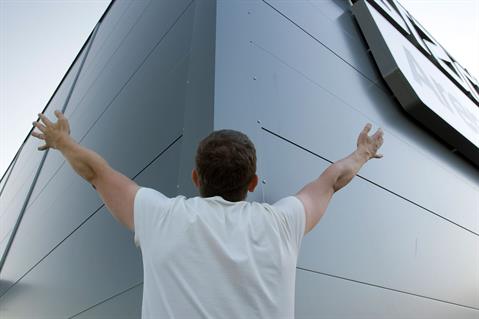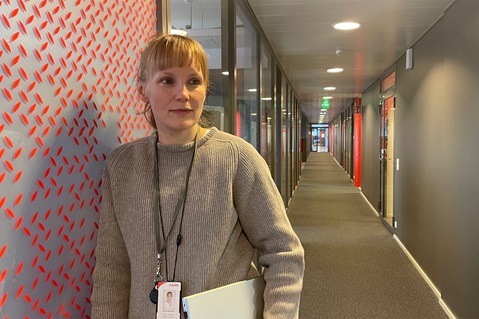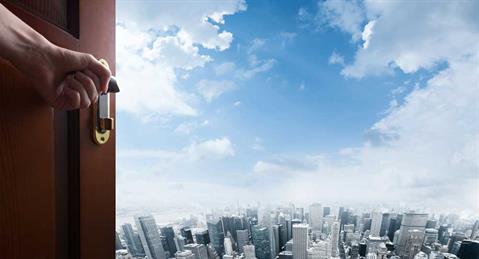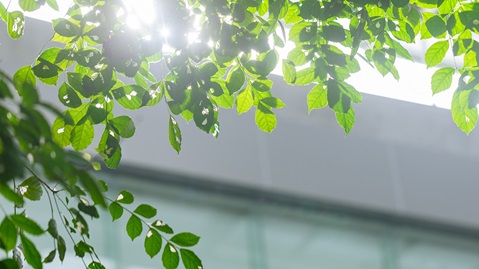
We are adopting a holistic life cycle model

"We have been actively working towards sourcing raw materials responsibly, minimizing waste, using recycled content in products and enhancing end-of-life solutions.
With the construction industry expanding rapidly, there is a strong need to address its impact on the environment. It is important now more than ever to adopt a more sustainable approach by switching from a linear to a circular economy."
Tuovi Palojärvi, Head of Environment & Sustainability
Building long-lasting, durable products
We have been consciously working towards optimal material efficiency in our products and solutions by adopting a holistic life cycle model. We source our raw materials responsibly, minimize the amount of production waste, and effectively use circular materials in production. We also design our products in such a way that the minimum amount of waste generated on-site and end-of-life demolition waste can be efficiently recycled.
Thanks to premium steel and coatings our steel-based building products are both light and long-lasting, with guarantees of up to 50 years. This reduces the need for maintenance and use of new materials, which would cause carbon emissions.
Sourcing raw materials from close and responsible partners
It is of paramount importance to choose materials that are produced locally to minimize emissions from transport. For example we source our steel mainly from a responsible partner — our parent company SSAB. SSAB's steel is made energy-efficiently from Nordic iron ore having around 15…20 % lower carbon footprint than the that of world average. In a near future, we can utilize also fossil free steel that SSAB will introduce in an industrial scale in 2026.
Using recycled material in our building products
We look at waste products more as an opportunity — recycled material is an important component in the production of our building products:
- About 20% of Nordic SSAB steel used in our products is recycled including internal scrap
- Early in 2024 we start to deliver 100% recycled steel - SSAB Zero - for our building products
- Over 70% of the weight of the Ruukki Life panel insulation is made of recycled glass
- Our own PIR-formulation contains a raw material that uses 50% recycled PET
Reusing production scrap as raw materials
Our processes have been developed to minimize and effectively utilize waste materials generated in production. Steel scrap from production has traditionally already been used in steel mills to replace iron ore in production. The carbon footprint of steel made from recycled steel is around 50-80% lower than that of steel made from iron ore. The insulation waste from our sandwich panel production in Alajärvi and Oborniki is being used to make blown wool for buildings or as raw material for new mineral wool. The waste from the production of finished panels — the steel and insulating parts — can also be recycled. We are also continuing to develop the recovery of other production waste - for example using the insulation waste from PIR production as a raw material for other products.
Optimizing end-of-life reusing and recycling
We believe in finding a use for our building products beyond the life cycle of the structure. Our façade products and roof load-bearing profiled panels can be dismantled and reused for new projects. Here’s an example of how it works:
- Sandwich panels and load bearing steel sheets can be easily removed from building frames and reused in the case of temporary or other short life span buildings.
- We are working on developing methods for evaluating the end-of-life value of structures through the PROGRESS project we have initiated with the EU
- Development of legislation in the future will facilitate the reuse of underutilised building products
Finally, in the end of life of metal products, the value is still there:
- Over 90% of metal from construction demolition is recycled
- Metal recycling not only save significant abiotic resources but also 60% to 95% of energy compared to primary production
- The metallurgical properties of steel allow it to be recycled continually with no degradation in performance, from one product to another
- The high value of steel scrap means that there are no costs associated with waste and income can be generated from end-of-life of steel products
- Because steel facing is protecting the insulation material in sandwich panel, it makes easier to recycle also the insulation materials instead of landfilling

Our life-cycle approach
We take into account sustainable material and energy usage in all product phases and take responsible for effective material circularity. Everything is starting from sustainable raw material usage, continuing to effective manufacturing and logistics, enabling fast and safe installation processes and human wellbeing, energy efficiency and product longevity during the building use phase. Steel-based products are also 100% recyclable in the end of life of the building and not forgetting reusability that can reduce dramatically future buildings carbon footprint.





.tmb-250x190.jpg?sfvrsn=607438b5_1)






.tmb-479v.jpg?sfvrsn=2ac84b71_1)
.tmb-479v.jpg?sfvrsn=3f2d2d14_1)
.tmb-479v.jpg?sfvrsn=aa708b54_1)


.tmb-479v.jpg?sfvrsn=af8e602b_1)